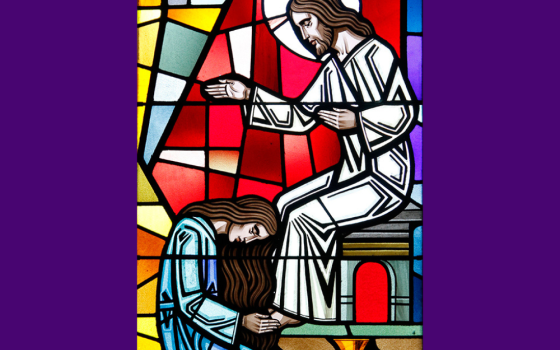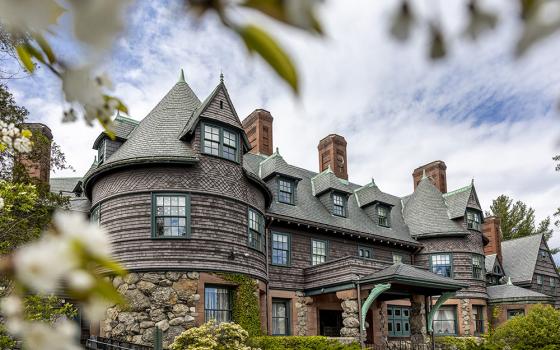
When Trinity’s board appointed me president in the summer of 1989, I asked them what I should know about dealing with our local bishop in Washington (then Cardinal James Hickey). A Sisters of Notre Dame de Namur trustee looked at me with her cool gaze and said simply, “Don’t worry about the bishop. Your job is to fix Trinity. Fix it, or close it.”
One of the oldest Catholic women’s colleges in America, Trinity had suffered steep enrollment declines and mounting financial problems in the 1970s and 1980s. My predecessor was the first lay president, the fifth president (permanent or interim) to come and go in the perilous ’80s. The trustees were skeptical of Trinity’s future; the previous year, placing bets that Trinity might not make it, the Sisters of Notre Dame de Namur trustees secured a change in Trinity’s bylaws to ensure that they would receive the proceeds from any dissolution of the college’s assets.
At age 36, as a street-lawyer-turned-fundraiser at Georgetown University Law Center, I had little experience with executive management, let alone ecclesiastical protocols. As an alumnae leader who was also a trustee, I had frequently shared my opinions in board meetings about what Trinity should do to rescue itself. Calling my bluff by appointing me president, my trustee colleagues felt they had little to lose.
 Soon after my appointment, Ex Corde Ecclesiae sparked new discussions about Catholic higher education. Hickey invited the presidents of Georgetown, The Catholic University of America and Trinity to dialogues about mission. This was new territory for me, the only woman in a room full of clergy debating theological tracts and arcane seminary rules laced with incomprehensible Latin puns. Wearing my best Catholic school manners, I feigned interest while my brain kept flashing on Trinity’s deteriorating roofs, low wages and budget deficits. There was no money on the table in the Ex Corde dialogues. My mandatum was, “Fix it or close it,” and learned discussions of communio offered no solutions for Trinity’s struggles.
Soon after my appointment, Ex Corde Ecclesiae sparked new discussions about Catholic higher education. Hickey invited the presidents of Georgetown, The Catholic University of America and Trinity to dialogues about mission. This was new territory for me, the only woman in a room full of clergy debating theological tracts and arcane seminary rules laced with incomprehensible Latin puns. Wearing my best Catholic school manners, I feigned interest while my brain kept flashing on Trinity’s deteriorating roofs, low wages and budget deficits. There was no money on the table in the Ex Corde dialogues. My mandatum was, “Fix it or close it,” and learned discussions of communio offered no solutions for Trinity’s struggles.
I came to understand the coolness of the response of the trustee who told me to focus on Trinity. The demands of ministry at Trinity left little time for parsing the status of juridical persons. St. Julie Billiart, the founder of the Sisters of Notre Dame, had a passion for educating poor girls orphaned by the French Revolution. In 1804, her zeal so aggravated the bishop of Amiens, France, that Julie moved her institute to Namur, Belgium. Trinity’s founding echoed Julie’s penchant for controversy; when the Sisters of Notre Dame de Namur announced plans to establish Trinity in 1897 because Catholic University then refused admission to women, some conservative monsignor tried to stop them on the grounds that educating women was part of the heresy of Americanism. The sisters persisted and won their case for Trinity, embedding in the bones of their new college a radical zeal for women’s education.
Taking my cue from Julie and Trinity’s founders, I focused on transforming the university to serve new populations of women whose economic, family and social circumstances were barriers to higher education. At one point I asked the trustees whether they saw Trinity’s mission as continuing to serve predominantly Catholic students of traditional age, or whether educating women remained the primary mission focus. The trustees were adamant about women’s education: “Why should we try so hard to reclaim an audience that no longer needs us,” asked a trustee, “when there are thousands of women at our doorstep who need this education so much?”
While the sisters’ commitment to social justice affirmed Trinity’s transformation, the congregation was also changing. Legally, Trinity was founded as an independent civil corporation (so prescient on the part of our founders!); our historic sponsorship relationship was through the Maryland Province of the Sisters of Notre Dame de Namur. But the province morphed into three units, leading to discussions of our relationship; we agreed that “partnership” rather than “sponsorship” was more accurate. We ended contributed services early on in my presidency, because if Trinity was going to survive it had to be financially independent. As more sisters retired, we worked through issues ranging from responsibility for convent maintenance to the proportion of sisters on the board. We insisted on sustaining the convent at Trinity because the presence of these great women still galvanizes our ministry.
Two decades later, Trinity flourishes -- more than 2,000 students are enrolled in four academic schools, including more than 800 in the women’s college. Ninety percent of our students are black and Hispanic; Trinity educates more D.C. residents than any private university in the nation. Trinity’s transformation was only possible with the inspiration of the Sisters of Notre Dame, who taught me that a university is truly Catholic not because our students are Catholic (the majority are not) but because we who are passionate about this mission live the Gospel call to action for social justice with zeal for the better lives our students will live through the Notre Dame de Namur legacy in education at Trinity.
Patricia McGuire has been president of Trinity Washington University (also known as Trinity College in Washington, D.C.) since 1989.







